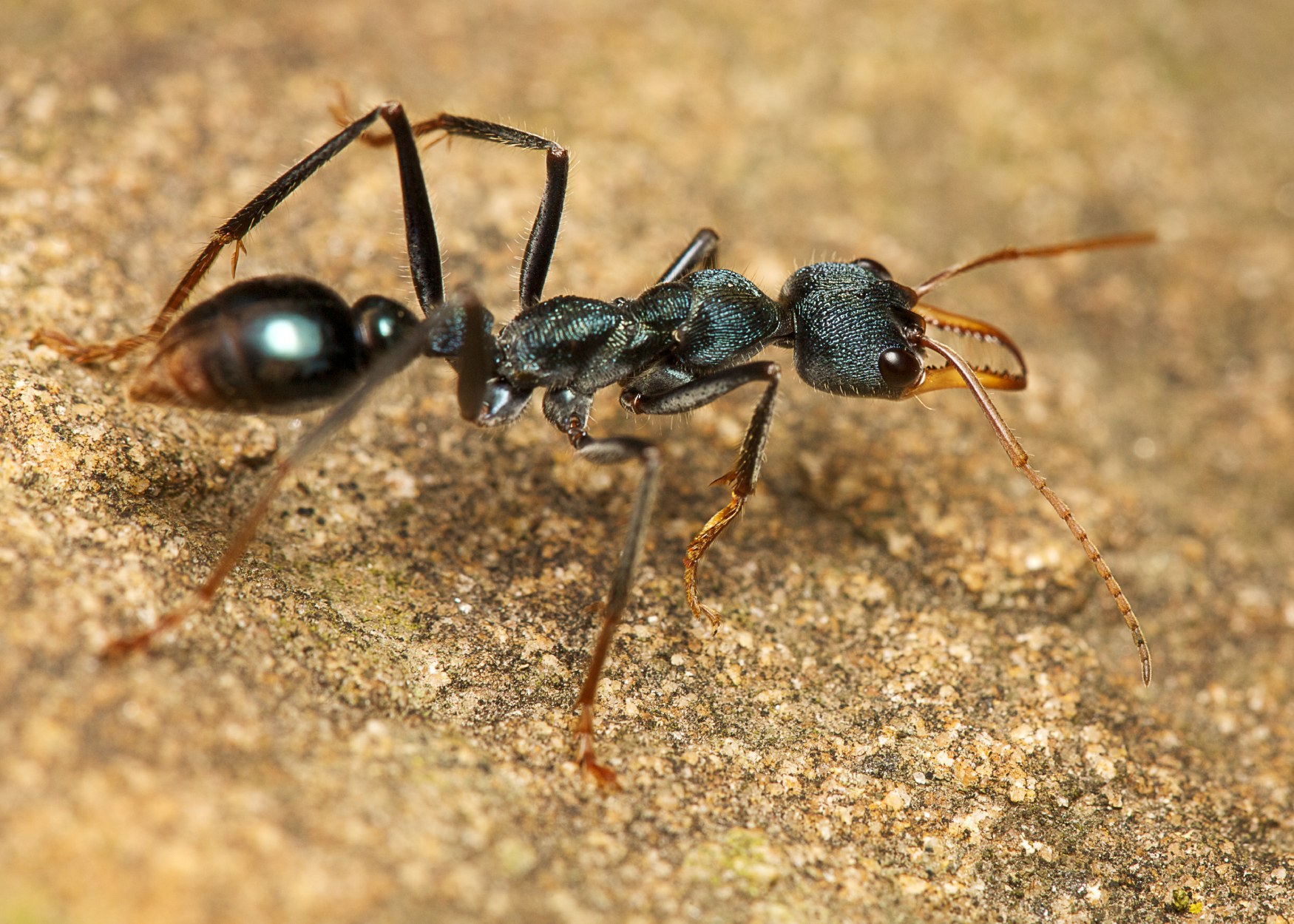What attracts Ants to Your Home?
Like other living creatures, ants are naturally attracted to water since they need it to survive. Once the cooler and dryer months approach, ants find their way into homes in search of a new water source and food. It is a common misconception that ants move inside to seek warmth. Their nests are built to regulate temperature and can withstand weather changes. Therefore, ants entering a home or building is for the purpose of locating water and food.
Ants can build their homes, or nests, nearly anywhere. Under the foundation of a home, within the home’s walls, or in a yard are some places ants will call home. It can become difficult to find ant colonies and prevent ant infestations due to their ability to thrive in many different locations.
Common sources of attraction include:
• Pet food
• Crumbs & Sugar
• Moisture
• Foundational cracks
• Overgrown yards
Once ants are in your home, they leave an invisible trail of pheromones to mark a path and direct other colony members to a particular food source. Therefore, it is important to thoroughly clean any areas around your home where you might have seen ants.
Common Species of Ants
The key to successfully getting rid of ants is being able to correctly identify the species that is infesting a home. Not all species can be exterminated in the same manner. The most frequent species homeowners are likely dealing with include:
• The Black House Ant
• The Sugar Ant
• The Fire Ant
• The Carpenter Ant
The most common ant you can encounter as a homeowner is the Black House Ant. This type of ant is not picky when it comes to a food source and can be found in the home, yard, or trash. What makes them potentially dangerous is their ability to spread disease. Black House Ants feed on dog feces which they will carry back to their nest. In the journey back to their nest, they will leave small trails of excrement which can potentially spread diseases such as salmonella to humans.
As their name suggests, Sugar Ants are most drawn to sugar. They are predominantly found in moist regions such as the Pacific Northwest and in the South. They are most commonly found in damp environments such as kitchen sinks or bathrooms. Female Sugar Ants can be identified by their orange bodies, while the male sugar ants are solely black in color. Sugar ants are most drawn to honey, syrup and other sweet sticky substances. Sugar Ants will bite, but they do not sting or contain venom.
Fire Ants are easily distinguishable by their brown warm-toned bodies. Their mounds are typically found outside against objects such as playground material, fencing, and fallen logs. They are extremely protective of their mounds and will swarm any intruder, an animal or human, and then sting. The sting of a Fire Ant is painful due to the venom released and can be dangerous if the victim receives multiple bites. Side effects can include vomiting, swelling, rapid heart rate and more.
The Carpenter Ant, usually black in color, gets the name from its inclination for wood. They are most commonly seen in the springtime, but colonies can live for 3 to 6 years. Carpenter Ants are particularly drawn to moist wood and seek out areas with leaks or drainage. While they don’t eat wood, they do burrow deep within it. Their nests can cause severe structural damage whether it be to a home or a hollowed out tree. They are rarely seen during the day and prefer to forage for food at night. Carpenter Ants are attracted to meat, sweets, grease, and fats. While they might cause a great deal of structural harm, they do not bite.
How to Get Rid of Ants
At home methods for getting rid of ants include:
Fortifying Your Home
Start off by identifying how the ants are entering your home. Once the entry point is determined, repair any damage and seal cracks to prevent ants from entering. For example, identifying and repairing cracks in your home’s foundation, sealing gaps between screen doors and door frames, and inspecting the siding of your home is important to prevent infestations. It is also important to regularly inspect your kitchen storage and evaluate if any changes need to occur to prevent attracting ants. Using airtight containers and properly sealing food can be helpful to block odors or prevent spilling food that will attract ants.
Boiling Water
If you can locate the ant colony, pierce the nest with a broom handle and carefully pour boiling hot water into it. This may need to be repeated several times.
Baiting
Insecticide traps used for baiting are a great solution when you cannot locate the colony. The trap, known as a bait station, is a small hollow pyramid-shaped piece of plastic with a sweet smelling poisonous bait inside. The trap works by luring in the worker ants, who then bring the bait back into their colony, to feed to their queen. Effects typically will not be noticed for a week or two.
Need Professional Help?
If you have tried these solutions and you are still unable to get rid of your ant problem, please give the number at the top of the page a call to get connected to a local pest professional in your area. We do not want your house and family to continue dealing with the current pest and want to find ways to protect your home in the future.

